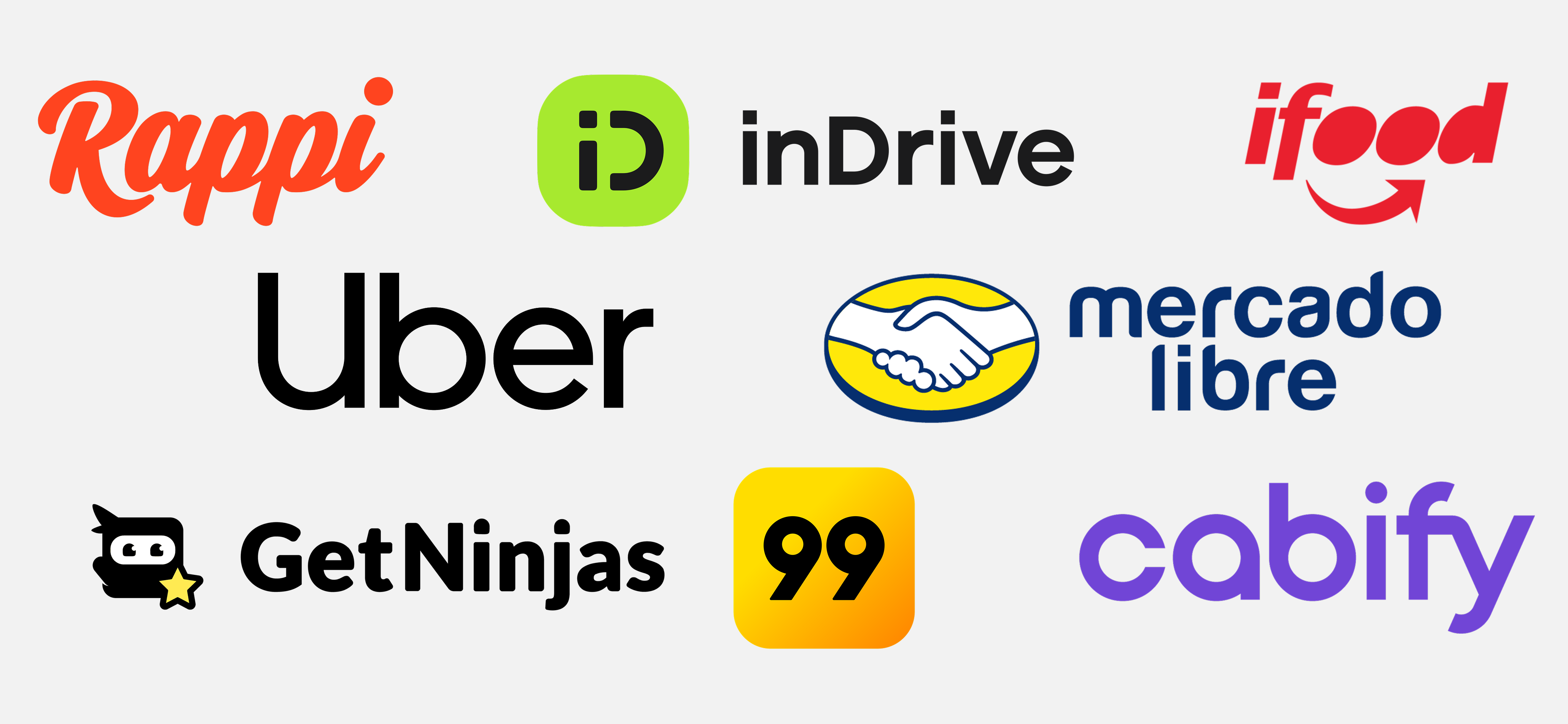The Web: Tearing Down the Walled Garden
Game distribution is the most lucrative business in gaming and has even turned non-gaming companies into core players in our industry. Companies such as Valve, Microsoft, Sony, Nintendo, Apple, and Google have all generated significant business lines around the distribution of games.
These distribution platforms provide unparalleled value to both developers and users. Developers need a way to connect with users natively for their games to be discovered, to distribute their game, and to push game updates efficiently. Distribution platforms provide a centralized place for users to find, buy, and download games in a safe and efficient manner.
Despite the clear value proposition for both parties, centralized distribution platforms have recently faced criticism for the misalignment between the value provided to their customers relative to the cost of their services
As we observe the evolution of game distribution platforms, it is clear that each major player has leveraged a unique combination of existing user bases, content strategies, and technological advancements to carve out their market share. However, the web, with its vast reach and inherent advantages, has yet to fully capitalize on its potential as a distribution platform for games. This presents an intriguing opportunity: while the web has faced significant challenges in matching the performance and experience offered by traditional platforms, ongoing improvements in web technologies and infrastructure may unlock its potential as a channel for game distribution.
What Does the History of Distribution Say About the Web?
Every major distribution platform in games has launched with either a first-party content-led strategy or a hardware-led strategy:
- Steam (Valve): The most prolific with >80% market share, Steam was launched as a result of early challenges by the publisher with pushing updates for their game portfolio (Half-Life, Counter-Strike), addressing cheating, and improving accessibility to first-party content. Only later did Steam introduce the concept of digital game ownership and third-party game distribution.
- Epic Games Store (Epic Games): By the time the Epic Games Store (EGS) launched in December 2018, their game Fortnite had already generated ~$5B in revenue that year. While the platform aimed to provide an alternative to Steam’s 30% revenue cut by only taking 12%, the store continues to be kept afloat (losing up to $300M per year from their aggressive strategy in securing exclusives and offering giveaways to players) by Fortnite. This strategy has allowed EGS to grow to 270 million PC users and $950 million in revenue (VentureBeat).
- Microsoft Store (Microsoft) and PlayStation Store (Sony): The Microsoft Store and PlayStation Store stemmed from a modernization of the slow and costly process of brick-and-mortar retail distribution. Through their respective launches in 2005 and 2006, Microsoft and Sony were able to cut out the middlemen (e.g., Gamestop), reduce physical production and shipping costs, control sales and pricing, and thus increase profit margins. While each store has improved their value proposition to the end gamer over time, they were able to fully bring distribution in-house due to their “lock-in” of the gamer through the console (Xbox, PlayStation).
- App Store (Apple) and Google Play Store (Google): Both the App Store and Google Play store launched in 2008 as a digital app marketplace for Apple and Android devices respectively. The growth of the mobile gaming market and the growth of both mobile marketplaces have been inextricably linked - with gaming consistently making up >50% of revenue in each store. This has only served to increase the amount of leverage each store has on its phone owners.
There is a common thread through all of these distribution platforms: each had an existing user base.
With consumers' adoption of the web, it seems surprising that the web hasn’t been widely adopted as an access ecosystem or distribution ecosystem for games. However, there are clear justifications for the lack of adoption that also gives hope for an open web future.
What Has Held Web-Based Gaming Back?
Web-based technology has struggled to keep up with native applications due to limitations on performance, graphics, input responsiveness, and infrastructure:
- Performance limitations: Browsers rely on JavaScript, which is slower than the compiled languages used in native games, limiting performance and responsiveness. Limited access to hardware acceleration further weakens web-based games compared to native applications.
- Graphics capabilities: WebGL and WebGPU have improved browser graphics but still lag behind native APIs like DirectX and Vulkan, making it hard to achieve complex 3D rendering and high-fidelity visuals in browsers.
- Input latency: Web games often have higher input latency, frustrating gamers who need precise, fast responses, especially in genres like first-person shooters and fighting games.
- Network constraints: Web games depend on stable internet connections. Multiplayer games can suffer from latency, and large assets lead to long download times, making gameplay slower than native applications.
- Storage limitations: Browsers' limited access to local storage hampers handling large assets and saving files efficiently, restricting offline play compared to native games.
- Audio processing: Browser limitations in audio APIs make real-time audio processing harder, resulting in less immersive sound experiences than native platforms provide.
- Browser compatibility: Web games need optimization for different browsers, which adds complexity and makes it difficult to ensure consistent performance across platforms.
- Competition from mobile gaming: Mobile gaming has captured much of the casual market, offering similar convenience with simpler gameplay.
These limitations have partially been addressed through several technologies over the years:
- WebRTC (2011-2017): WebRTC enables real-time communication for multiplayer gaming, voice chat, and live streaming directly in browsers without extra plugins. While it was released in 2011, it was not supported by Android until 2013 and Apple until 2017. Since then, it has become a web standard.
- Progressive Web Apps (PWAs, mid-late 2010s): PWAs offer app-like experiences, including offline play and push notifications, allowing easy game access without downloads.
- WebAssembly (2017): WebAssembly allows near-native speed for code in languages like C++ and Rust, enabling complex games to run smoothly in browsers.
- Cloud Gaming (latest modern iteration in 2019-2020): Cloud services stream high-quality games to browsers, removing the need for powerful local hardware and broadening AAA game accessibility.
- WebGL (v2.0 in 2017) and WebGPU (2023): These enable high-performance 3D graphics in browsers without plugins. WebGPU promises even better performance, aiming for console-quality gaming on the web.
With the technological limitations becoming less of a problem over time, we believe that the web will harbor the next distribution platform. As of 2024, there are approximately 5.4 billion internet users worldwide (Datareportal). Each gaming distribution platform mentioned previously only had a fraction of this when they launched their digital distribution.
Networks create opportunities to deliver content, experiences, and goods to consumers. This could be viewed similarly to real estate; you either build where people are or where you predict they will be.
Who Builds It?
While web-based distribution is a blue ocean, it will be hard (but not impossible) for a startup to compete.
The core issue is that since no entity “owns” the web, no one owns the end users; there is no way to easily funnel users to a web-based distribution platform. Third-party app developers are not going to build for a platform that does not have users (a chicken-and-egg issue).
Every major distribution platform acquired their user base through popular first-party content, wide adoption of hardware, or both, which allowed them to parlay into a distribution platform for their already-acquired user base. Developers, attracted by an already existing user base, built apps which brought in more users and developers, creating the perfect flywheel. A startup looking to build a web-based distribution platform will struggle to follow the same process and may need to re-write it entirely.
We believe that this new playbook will leverage the unique strengths of the web:
- (Content) Leverage the low barrier to entry to build a content library: Distribution and discovery today has become so difficult that many developers are open to distributing on multiple platforms. In particular, accumulating casual games (that will struggle to grow individually) has the potential to build a strong enough base of content to sustain an ecosystem to attract and retain users.
- (Infrastructure) Utilize web-based infrastructure to attract buy-in: The other option is to focus more on web-based infrastructure around payments, shops, or even porting that could encourage non-web developers to explore web distribution. Through this, a startup could be viewed as more of an aggregator of web content that could evolve into a wider distribution platform.
Takeaway: Building a successful distribution platform involves creating a compelling network that attracts both users and developers. This can be achieved through leveraging existing technologies, providing first-party content, or integrating new hardware. Although web-based distribution faces challenges, its development is not limited to established players. With a strategic approach, new entrants can capitalize on the web’s unique advantages to establish a robust distribution ecosystem.







.png)

.png)


.png)
.png)



.png)

.png)

.png)



.png)


.png)

.png)
.png)
.png)
.png)
.png)
.png)


